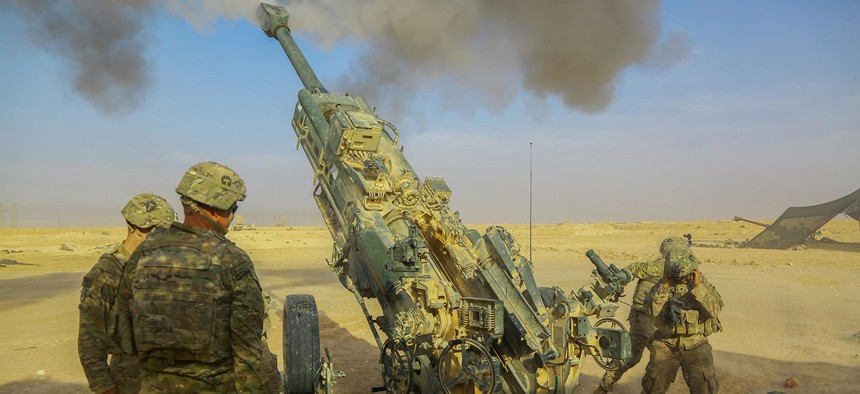Top Enlisted Leaders Push Back: There Is No Readiness ‘Crisis’
Recent deadly accidents are concerning, but part of the risk of military operations around the globe, they said.
Despite a rash of fatal accidents across the services, the U.S. military’s top enlisted leaders said Monday that Washington’s talk of a readiness crisis was overblown.
“I’ve been in 34 years. Every day there’s a crisis in something,” Sergeant Major of the Marine Corps Ronald Green said at a press briefing with his fellow service senior enlisted advisors today. “But you walk out and ask the average Marine, ‘Are we in a crisis?’ I don’t think he’ll tell you we are in a crisis.”
Still, Defense Secretary Jim Mattis said he was “shocked” at the military’s poor state of readiness when he returned to the Pentagon as its civilian leader. And lawmakers have grown increasingly concerned that 2017’s plane crashes, ship collisions, and other non-combat deaths are evidence that the military is breaking under the strain of 16 years of war. Just last week, a U.S. Navy C-2A Greyhound transport plane crashed in the western Pacific, killing three sailors.
The enlisted leaders said observer in and out of the Pentagon aren’t wrong to say more demands are being placed on the services. Investigations found that several of the Navy’s recent collisions at sea, for example, were at least partly the result of overworked or under-trained crews.
But “from my perspective, from a joint perspective, I don’t think we’re in crisis right now,” said Army Command Sgt. Maj. John Troxell, the senior enlisted adviser to the chairman of the Joint Chiefs of Staff.
Yes, the services and their troops are concerned — about everything from those accidents and maintenance issues to the ever-unpredictable federal budget — but there’s a difference between an acute catastrophe and the reality of operating a force of over a million active duty troops around the world.
“You may see the challenges that we all have as a service, that any organization might have,” said Chief Master Sgt. of the Air Force Kaleth Wright. “What you might not see are the thousands and thousands of great things our servicemembers do on a regular basis…While we do have challenges, we’ve always had challenges, we likely always will have challenges in the future.”
Top national-security voices on Capitol Hill, however, are deeply troubled by the state of the military’s readiness. It’s one of the key reasons cited by Armed Services Committee leaders for passing a near $700-billion defense authorization bill for 2018.
“Most importantly, this legislation will help reverse the dangerous readiness crisis that is endangering the lives of our men and women in uniform,” read a joint statement by Sen. John McCain, R-Ariz., Sen. Jack Reed, D-RI, and Rep. Mac Thornberry R-Texas, when the House and Senate armed services committees agreed to a conference report on the bill.
Both houses passed the legislation; it’s now awaiting President Donald Trump’s signature.
But war, ongoing demands, and increasing equipping costs as technology evolves all are justification enough, the enlisted leaders said.
“As the world becomes more unstable around us, the need for increased readiness” will only grow, Wright said. “We don’t see that as a crisis inside the military; we’re responding to the threats and the challenges of the world around us.”




